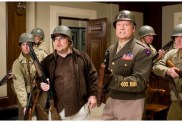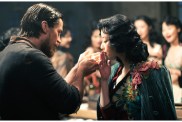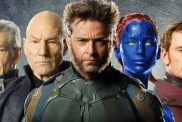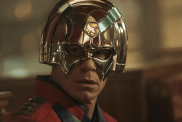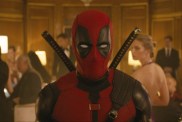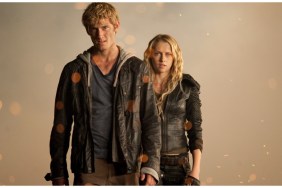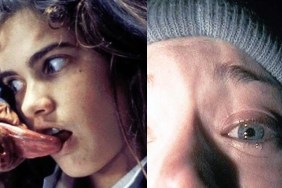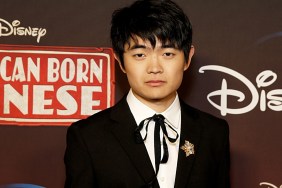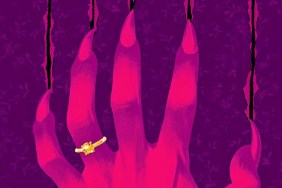A look back at the classic teen horror film I Was a Teenage Werewolf
As the 1940s ground to a Hitler-killing halt, the next generation of American kids — well, of international kids, actually — were confused and frankly, angry. It happens often post-war time. The children of the people who were sent and who sent others to be offed on the frightful front-lines, grow up with a mile-wide chip on their shoulders. And the best thing that comes out of this inevitability is that this sort of youthful dissent almost always makes its way into the arts and popular culture.
Truth. If it wasn’t for World War II there would be no French New Wave, no Italian neo-realism, no Godzilla. And no I Was a Teenage Werewolf. The latter-mentioned 1957 horror film is rarely discussed in terms of its sociopolitical significance, but I can think of no other American genre effort of the period that so taps into the anxieties and cynicism of the burgeoning U.S.youth culture, fueled as it was by rock ‘n’ roll and rebellion. And in Gene Fowler Jr.’s scrappy, cheap and innovative flick, that bile came in the form a toothy, drooling and merciless hormonal and hirsute menace.
RELATED: The 9 Best Movies About Kids and Werewolves
I Was a Teenage Werewolf stars a very young, pre-Little House on the Prairie, Michael Landon as a volatile teen named Tony, a kid who — like most American teenagers of the time — must have seen 1955’s Rebel Without a Cause a few more times than humanly healthy. The thin-skinned lad is ever-quick to answer any conflict with violence, much to his teachers’ and his father’s dismay. Tony is smart and sensitive underneath all that misplaced rage (hence why his doting girlfriend Arlene puts up with his nonsense endlessly) and, after one senseless brawl too many, he takes the local beat cop’s advice and visits noted psychologist Dr. Brandon (Whit Bissel), an MD specializing in hypnotherapy.

The good (or, maybe not-so-good) doc is convinced he can help Tony by using him as a guinea pig for a new experimental serum he has developed that convinces the mind and body to regress to a primal state. The road to Hell is paved with good intentions and Brandon thinks that by sort of “re-setting” mankind back to its base elements, a better race of people will emerge. This concept alone makes I Was a Teenage Werewolf an important film as its reverse Darwinian mad science anticipates the philosophies developed in David Cronenberg’s early work (especially Shivers and The Brood) and Ken Russell’s Altered States (and the book by Paddy Chayefsky on which it was based).
Anyway, Doc Brandon’s psychic manipulation does indeed work but not quite as intended as Tony becomes a lab-rat werewolf who prowls day and night, aiming to off anyone who gets in his way. But while this lethal side effect is unwelcome, the interesting thing is that the treatments do help Tony regain his focus and fall-in line with the socially acceptable status quo, much to the High School guidance counselor’s delight. But when Tony sees a comely co-ed (Playboy Playmate Dawn Richard) practicing her gymnastics routine, his horrific hormonal cocktail whirs to life and then, when the school bell rings awakening a Pavlovian response, the teenager turns again, this time in front of his pals. With the cops and angry townsfolk hot on his hairy heels, Tony the werewolf heads for the hills, shunned and spurned by the society that made him.

The first thing that really jumps out at you about this American International Pictures release is that it’s not played for camp. It’s not meant to be funny. Sure, we can giggle at some of the antiquated acting and snort at the weird “Eeny Meeny Miney Moe” musical break that gets all the kids’ toes tappin’, but we cannot laugh at the central drama nor can we dismiss Landon’s remarkable and sincere performance as the sad-eyed kid who is the perpetual outsider, unable to connect with and be part of the mainstream. Here is a boy lost in a world that he deems as hostile and broken and, though he cannot articulate this, he’s raging against peers and parental figures who just aren’t questioning anything.
The central, overt subtext of the film is deeply sad, too. When Tony finally decides that he wants to connect, that he doesn’t want to lose his girlfriend — the only thing he seemingly loves — and is tired and worn out by being on the fringe, the man he is pushed to put his trust in thoroughly abuses and manipulates him. It’s a tragedy and totally telling of how kids of the period saw their elders. They simply weren’t to be trusted. Their lusts for power and greed end up dragging the world into bloody war and economical fallout. They lie to their children. They tell them of Santa Claus and the Tooth Fairy but then rip back the curtain to reveal the dismal truth and then just abandon them to figure it all out themselves. They try to control them. They reject their attempts at growth. And then they use them as pawns in their plans… and turn them into monsters.
I Was a Teenage Werewolf was — like all of these movies — panned by the critics at the time, though was a commercial hit. Of course those pesky grown-up critics hated it. They had no idea what the movie was really about and rejected the concept of teenage angst as being just a laughable rite of passage, totally ignorant that the sort of angst that was swelling around them would birth a generation of intensely political, angry and aware kids whose minds and hearts would affect the world. It was part of a series of “teenage monster” movies that AIP backed, most notably that same years’ I Was a Teenage Frankenstein, which — though unrelated as a direct sequel — once more dragged Bissel back as a mad scientist playing God. But none of these films had the primal, urgent and heartbreaking energy that Werewolf has in its finest moments. It’s a remarkable and important movie from a transitional time in American history.
